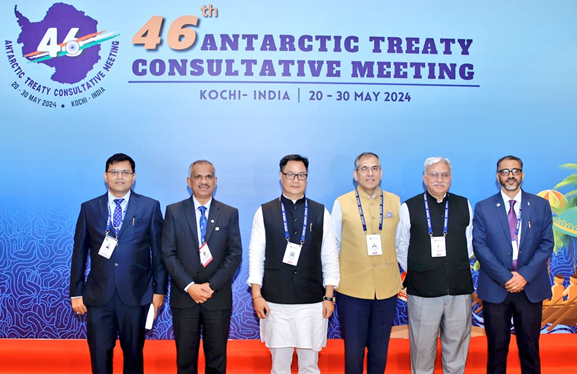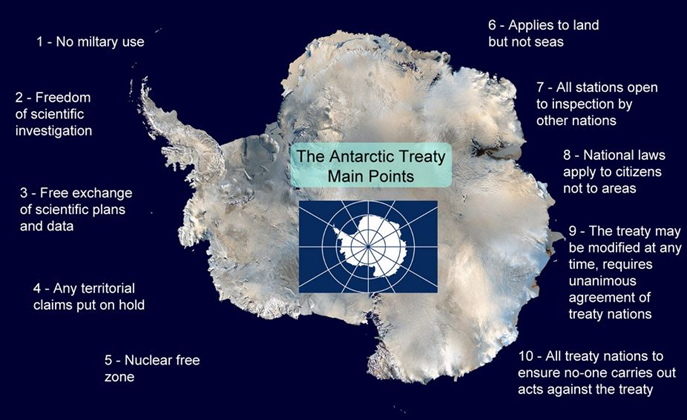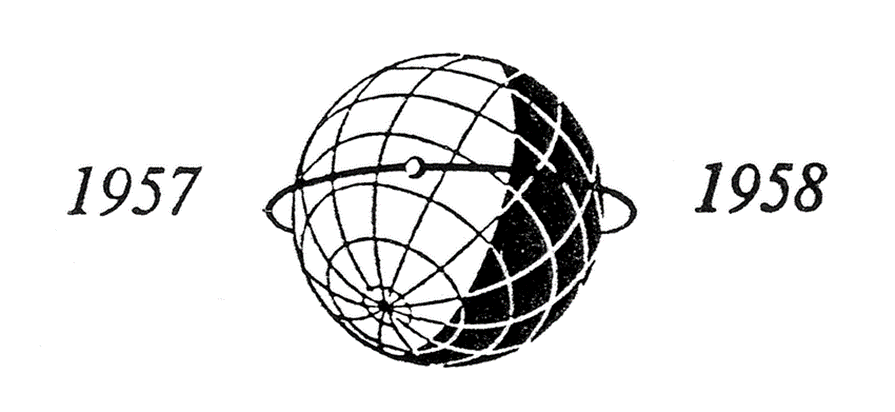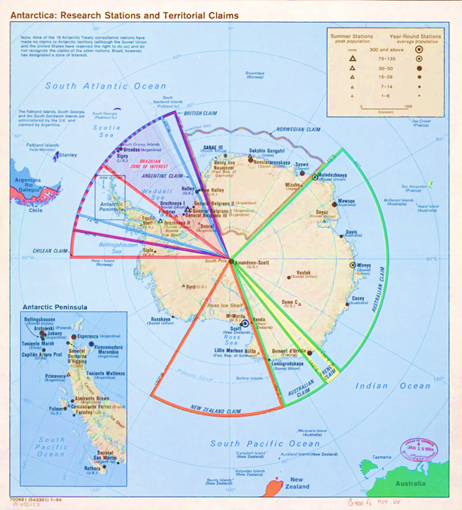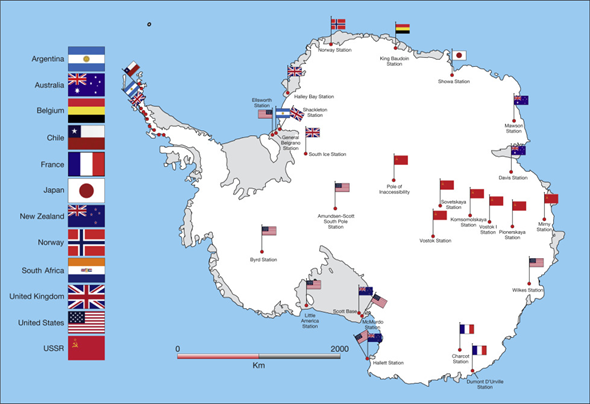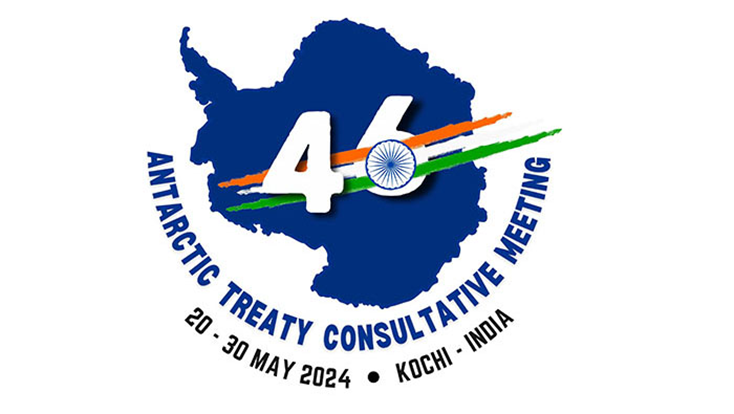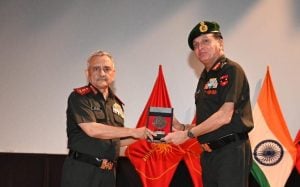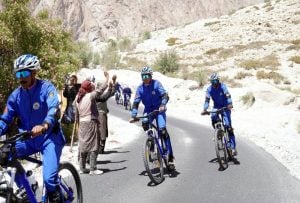The 46th edition of the Antarctic Treaty Consultative Meeting, also known as the Antarctic Parliament, in Kochi, Kerala. It is scheduled to go on till May 30 and will see a wide range of Antarctica-related discussions, especially the rise of tourism in the continent, and its implications.
India Hosts The Antarctic Parliament
Why In News
- The 46th edition of the Antarctic Treaty Consultative Meeting, also known as the Antarctic Parliament, in Kochi, Kerala. It is scheduled to go on till May 30 and will see a wide range of Antarctica-related discussions, especially the rise of tourism in the continent, and its implications.
- The event will be attended by the 56 member countries of the Antarctic Treaty. Originally signed by 12 countries on December 1, 1959, the treaty is a framework for peaceful coexistence and scientific cooperation in the continent.
- Here is a look at what led to the treaty’s enactment, and why it has been successful.
Tussle Over Territory
- Parts of mainland Antarctica were first spotted by British, American, and Russian ships in the 1820s, but the region did not come under the spotlight until the race to reach the South Pole heated up, according to KM Shusterich’s 1984 article, ‘The Antarctic Treaty System: History, Substance, and Speculation’, published by the International Journal (IJ).
- The competition was between Captain Robert Scott from the United Kingdom and Roald Amundsen from Norway — Amundsen won, becoming the first person to reach the South Pole on December 15, 1911.
- By the 1950s, seven countries — Argentina, Australia, Chile, France, New Zealand, Norway, and the UK — made formal territorial claims over the continent. Some of these claims, however, overlapped with each other, leading to conflict.
- The United States, the Soviet Union, Belgium, Japan, and South Africa also explored the continent but did not make any territorial claims.
- “Only five claimants (Australia, France, New Zealand, Norway, and the United Kingdom) mutually recognise[d] each other’s claims. Of particular concern..[were] the claims of Argentina, Chile, and the United Kingdom,” Shusterich wrote.
- Between 1947 and 1955, Argentina and Chile twice rejected the British proposal to go to the International Court of Justice (ICJ), and sort out their overlapping claims. “Both nations insisted that their sovereignty was unquestionable and that no third power could judge their domestic territorial claims,” Shusterich wrote.
- As a result, several attempts were made to enact an international agreement over the control of Antarctica.
- In 1956, India requested the United Nations to include ‘the question of Antarctica’ on the provisional agenda of the United Nations General Assembly. “India’s goals were to ensure international agreement that the development of Antarctica resources would be for peaceful purposes, that the area would be non-militarised, that nuclear weapons testing would be banned, and that the future disputes would be referred to the International Court,” Shusterich wrote.
- The proposal fell apart due to the opposition from Argentina and Chile, and no support from the US and the Soviet Union.
- A major breakthrough came during the 1957-58 International Geophysical Year (IGY), where 12 countries — Argentina, Australia, Chile, France, New Zealand, Norway, the United Kingdom, the United States, the Soviet Union, Belgium, Japan, and South Africa — agreed to not let their political and legal differences to hinder the scientific research in Antarctica.
- They also consented to allow countries working in Antarctica to place their scientific stations anywhere on the continent, regardless of territorial claims.
- The success of IGY built momentum for an international agreement over Antarctica. On May 2, 1958, the US proposed other IGY participant countries to join “in a treaty designed to preserve the continent as an international laboratory for scientific research and ensure that it be used only for peaceful purposes,” Shusterich wrote. The countries were invited to Washington DC to negotiate this treaty.
- The Conference of Antarctica went on from October 15 to December 1, 1959, and gave birth to the Antarctic Treaty. The agreement came at a time when the US and the Soviet Union were in the midst of the Cold War (1947-1991).
Agenda For ATCM 46:
- ATCM is the primary forum for discussing and coordinating activities related to the Antarctic Treaty System.
- It was established under the Antarctic Treaty, which was signed in 1959 and entered into force in 1961. It serves as the annual meeting of the parties to the Antarctic Treaty, known as Consultative Parties.
- The ATCM adopts legally binding agreements, known as Antarctic Treaty Measures (ATMs), as well as non-binding recommendations on various matters.
- Decisions within the ATCM are made by consensus among the Consultative Parties.
- The ATCM established the Committee for Environmental Protection (CEP) as a subsidiary body to provide advice and recommendations on environmental matters.
- India had last hosted the ATCM in New Delhi in 2007.
- During the Kochi meet, India will table its plan to construct Maitri II before the members.
- Any new construction or initiative in Antarctica requires the ATCM’s approval.


